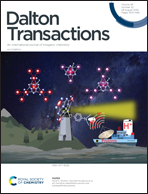Engineered Sn- and Mg-doped hematite photoanodes for efficient photoelectrochemical water oxidation†
Abstract
A feasible and cost-effective method was developed to improve the photoelectrochemical performance of the hematite (α-Fe2O3) photoanode. Using a hydrothermal method, tin (Sn) and magnesium (Mg) (co-)doped hematite films were prepared and characterized by X-ray diffraction (XRD), X-ray photon spectroscopy (XPS), and Raman spectroscopy. The average particle size of the α-Fe2O3 film varied from 150 to 300 nm. The photocurrent density of Sn-/Mg-co-doped α-Fe2O3 reached a maximum of 1.1 mA cm−2 at 1.23 VRHE, which increased approximately 3 times compared to that of pristine α-Fe2O3. It also yielded a maximum applied bias photon-to-current efficiency (ABPE) of 0.09% at 1.08 V vs. RHE. The excellent PEC activity could be attributed to Mg co-doping relieving the lattice distortion caused by Sn doping, and improving both the charge injection efficiency and charge separation efficiency without obviously changing the carrier concentration, which was proved by electrochemical impedance spectroscopy. This promising co-doping strategy could also be extended to other candidatephotoelectrodes.



 Please wait while we load your content...
Please wait while we load your content...